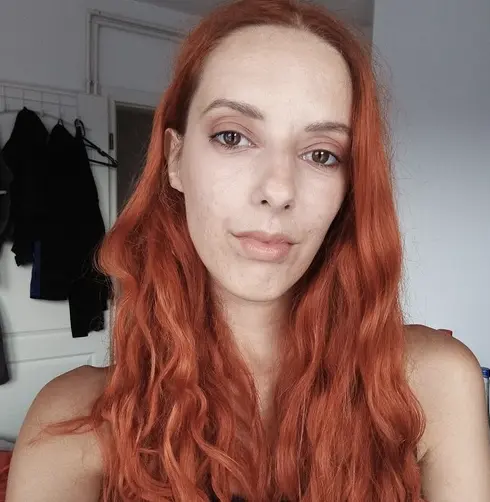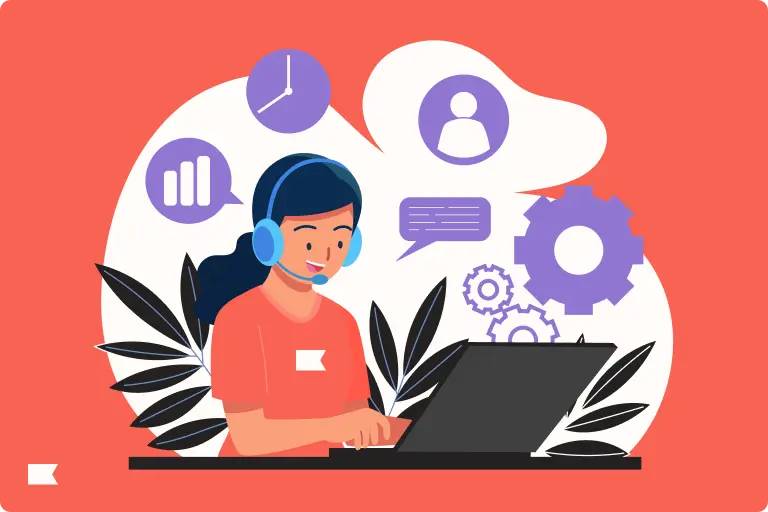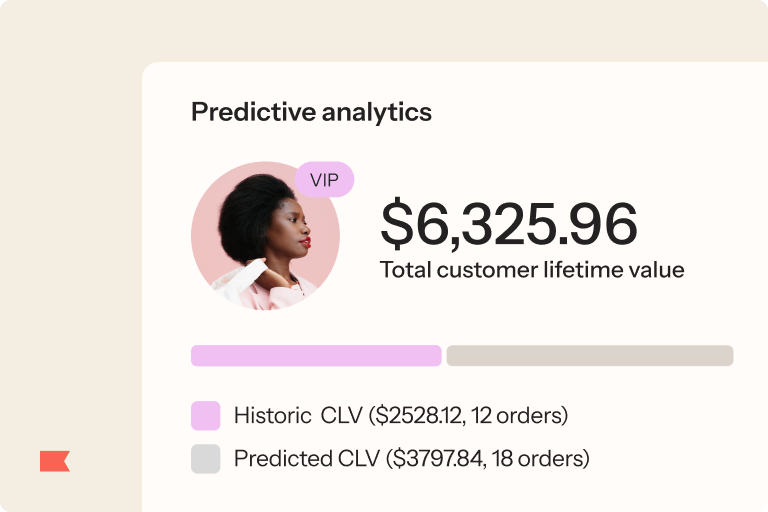Lifecycle marketing: a complete guide to navigating the customer journey
Every brand interaction tells a story, and your customers are the main characters.
Think about the last time you shopped online. Maybe you browsed a few home decor websites for a new rug, compared prices on jeans, or ordered your favorite soda in bulk without a second thought. Each time, you were in a different stage of your journey with those brands—some you were just discovering, while others you’ve trusted for years.
Your customers are the same. Some are exploring your brand for the first time, while others already know and love your products. Building these relationships matters because loyal customers can generate a lot of revenue—and it’s much easier to retain them than to always be acquiring new ones. When you nurture your relationships with customers, you can increase their lifetime value and create brand advocates who will help you grow.
That’s what customer lifecycle marketing is all about: connecting with customers at the right moments, keeping them interested, and turning them into repeat buyers. With the right strategies and tools, you can unify your data in one place and create a customer lifecycle that personalizes experiences, nurtures relationships, and builds customer loyalty.
What is customer lifecycle marketing?
Customer lifecycle marketing is the practice of connecting with customers at every stage of their journey with your brand. It’s a personalized marketing approach that breaks down different strategies for attracting, engaging, converting, and retaining your customers.
You can also think of customer lifecycle marketing as an omnichannel approach that combines email marketing, customer service, SEO, paid ads, SMS marketing, and more to engage customers at every stage.
Since B2C companies are managing the customer lifecycle for thousands or even millions of consumers, they’re faced with the unique challenge of personalizing experiences at scale. This is why B2C businesses need to centralize and manage their data in one place—so they can track customer interactions across multiple touchpoints and deliver the experiences consumers have come to expect.
The important thing to remember is that each interaction should move customers closer to the next stage, whether that’s subscribing to your emails, purchasing, or recommending your brand to others.
5 customer lifecycle stages
Every customer is on a journey with your brand, which begins the moment they discover you. Let’s walk through the 5 stages they experience:
1. Awareness
The awareness stage begins when someone realizes they have a problem that needs solving. At this point, they’re eager to find potential solutions.
For example, someone seeking low-calorie soda alternatives to support their weight loss goals likely wants an option that contains no sugar but still tastes good. They might:
- Ask friends or family who have successfully lost weight for recommendations.
- Search for options online, either via Google search or recommendations from people on TikTok, Instagram, and YouTube.
- Consult a nutritionist for expert advice.
- Discover low-calorie soda brands through social media ads.
All these behaviors are typical of the awareness stage, which marks the beginning of the search for answers to a problem.
Customer lifecycle marketing tip: At this stage, gathering data from online search, social media interactions, and lookalike audiences is essential for future engagement.
2. Consideration
When someone enters the consideration stage, they have a few brands in mind to help solve their initial problem. They compare products, prices, and other factors that could influence their purchasing decision. For example, they might look at:
- Product ingredients
- Product reviews
- Shipping fees
- Packaging
- Alignment with personal values
During this stage in the customer lifecycle, a potential customer may take a particular interest in one or two brands that align with their goals. They might sign up for a brand’s newsletter or follow them on social media to stay in the loop.
Customer lifecycle marketing tip: Email sign-ups are especially valuable at this stage, and it’s critical to build high-converting forms.
3. Conversion
The conversion stage in lifecycle marketing is where potential customers turn into actual customers. At this point, people have gathered all the information they need to decide whether or not to buy.
But that doesn’t mean they’ll buy immediately—some may hold out for an incentive or a sale, such as Black Friday Cyber Monday. Others might almost buy, but abandon their carts for a variety of reasons, like high shipping fees or a simple change of heart.
Keep in mind that it’s also common for someone to bounce between the consideration and conversion stages for quite a while, as they may need more information than they thought before purchasing. For example, someone looking to buy a low-calorie soda might hesitate if they’re unsure about its taste. To help convert those on the fence, automated flows can send timely reminders or offer incentives, such as discounts or free shipping.
User-generated content (UGC) can also push consumers over the conversion line. People trust other people, which makes a user-generated content UGC strategy especially important for your brand.
Customer lifecycle marketing tip: To help consumers move past hesitations, brands need to understand why they’re happening in the first place. This is a vital part of the conversion stage: gathering information in the form of data from your most engaged subscribers and followers, so you can figure out what it will take to convert them. With advanced analytics tools like RFM analysis, you can identify why certain types of customers are dropping off.
4. Post-purchase
The post-purchase stage happens between placing an order and receiving it. This stage can feel different for everyone—some customers might be excited for their order to arrive, while others might be worried about whether they made the right choice.
During this stage, it’s standard to send order confirmation and shipping confirmation emails to ease post-purchase anxiety. Transactional emails like these do more than just that—they show your customers you care about their experience with your brand.
You can also show you care this by:
- Making it easy to interact with your customer service team if your customers need anything.
- Sending helpful resources about the products someone purchased, so they can get the most out of them when they arrive.
- Investing in thoughtful, sustainable packaging, so the experience of receiving the product is a great one.
Customer lifecycle marketing tip: Proactive communication is key during this stage. Order confirmations, tracking updates, and other automated email flows ensure that the customer is supported throughout their post-purchase journey.
5. Loyalty
This is the moment of truth for your brand and your customers. After experiencing all the previous stages, your customer will either decide to buy again or not.
If they’re happy and you sell products that make sense to purchase again, they’re more likely to return for more. If not, they may explore other options. In this stage, a satisfied customer might:
- Share glowing reviews about their experiences
- Recommend your products to friends and family
- Join your loyalty program for exclusive perks
- Upgrade to premium versions of what they love
- Explore and try out other products
At this point, it’s time to focus on retention strategies that help keep your customers satisfied.
How to engage customers at every stage
Connecting with customers throughout their journey makes all the difference. Here’s how to engage them at each stage of the customer lifecycle using both paid ads and your owned marketing channels—like email, SMS, and push notifications—with real-world examples to inspire you.
1. Awareness stage: get noticed and spark interest
In the awareness stage of their journey, potential customers are on the hunt for solutions to problems they’ve either identified or have yet to stumble upon. At this stage, the goal is to spark interest and show people why your brand stands out among the rest.
Here are a few marketing strategies to help you get started:
Get people excited about signing up for your email and SMS lists. For example, you might invite your social media followers to subscribe to your newsletter for a chance to win a free product sample. The goal here is to transfer as many people as possible to a list you control and own, so you can speak more directly to your audience when they enter the consideration stage.
Customer lifecycle marketing tip: See how Klaviyo AI can help you grow your email and SMS lists with AI-generated experiments that optimize your web forms’ display timing for the highest possible submission rate.
Make it easy for people to find you online by using relevant keywords on your website and product pages. For example, a beauty brand might create a quiz that answers common search questions like, “How do I find the right foundation for my skin tone?” Content like this can help you rank higher in search results and position your brand as a go-to resource for helpful information.
Find influencers whose target audience overlaps with yours, and partner with them on sponsored content.
For example, Huda Beauty’s mission is to create beauty products for all skin tones. By teaming up with Golloria, a beauty and lifestyle influencer known for her honest reviews of darker foundation shades, the brand boosts credibility while also tapping into the influencer’s loyal following. This strategy increases brand awareness and fosters trust, making potential customers more likely to choose the brand’s products.
2. Consideration stage: keep people engaged
As people enter the consideration stage, they’re familiar with your brand but need more information before they decide to make a purchase. This is your opportunity to engage them further and showcase what makes your brand special.
Here are a few marketing strategies to help you get started:
Make sure the copy and images on your product pages provide all the information that your customers need to compare your brand to a competitor’s.
Write clear, evocative product descriptions that highlight benefits and features. Use high-quality images that show your products from different angles, situated within the presumed lifestyle of your core audience. Incorporate customer reviews and FAQs to help people dive deeper when they want to learn more.
When potential buyers see reviews and testimonials from other customers, it can be the nudge they need to purchase. By prominently showcasing positive feedback on your website, in emails and text messages, and on your social media accounts, you create an entire ecosystem of trust.
Customer lifecycle marketing tip: See how Klaviyo Reviews can automate well-timed reviews requests that help your customers make purchase decisions.
After capturing contact information through a sign-up form on your website, send new subscribers a warm welcome email series—a sequence of emails that introduces your brand, shares your mission, and highlights key products can nurture new leads with minimal effort. Your welcome series is one of the best ways to educate people about your products—a vital tool during the consideration stage.
Here, see how Soccer Supplement greets their new subscribers with a warm welcome email that explains their mission and offers valuable insights and tips in upcoming emails. They also provide educational content to help subscribers understand how their products can benefit them, along with a discount to encourage that first purchase.

Source: Milled
3. Conversion: make that first sale happen
The conversion stage is all about turning consideration into a purchase. By now, people have explored your product pages, subscribed to your email list, and seen some paid ads on social media—but they still need that final nudge to buy.
Here are a few marketing strategies to help you get started:
Use customer profile data to segment your email and SMS lists based on what people share with you. For example, if someone’s been checking out an eco-friendly skincare product, send them a browse abandonment email with more information on that item—and a discount if it makes sense.
Customer lifecycle marketing tip: See how Klaviyo segmentation can help you send more relevant messages by grouping people based on online interactions and stated preferences.
If someone places an item in their online cart but doesn’t buy, a gentle nudge can work wonders. An automated abandoned cart flow can draw them back to their shopping cart with a reminder within 24–48 hours.
Here, see how sparkling water brand Aura Bora uses an abandoned cart email to remind a subscriber about the items they left behind. The email also includes a quick survey, offering an easy way for customers to stay engaged with the brand even if they don’t buy right away. It’s a clever approach to keep the brand top of mind and nudge customers toward completing their order.

Some people just need to speak to someone to make a decision about whether or not to buy. If you’re noticing that someone is browsing your website or placing items in a cart on a consistent basis without buying, send them an email that connects them to your customer service team.
4. Post-purchase: create a positive customer experience
The sale’s made, but your job isn’t done yet. The post-purchase stage is your chance to create a lasting impression on your customers by making sure their journey from order to delivery runs smoothly.
Here are a few ways to make a great customer experience it happen:
Once someone places an order, they’ll expect you to keep them in the loop. Keep the communication flowing with order confirmation emails, shipping updates, and delivery notifications. Include tracking links in emails and SMS to keep people updated every step of the way.
The Ridge, a brand known for minimalist wallets and accessories, does a great job of keeping customers in the loop with this clear, informative order confirmation email. They use a visual shipping tracker that makes it easy to understand where the product is in the shipping process, with tracking links for people to engage with. The icing on the cake is the “get started” resource at the end, so buyers can learn about their products before they receive them.

After making a purchase, some customers might not know how to get the most out of the product, especially if it’s complex. Send follow-up emails with helpful product tips or usage guides that can reassure people that they’ve made the right choice.
A small surprise—like a thank-you note or a free sample in their package—can make a lasting impression with your customers.
After people have had a chance to enjoy your product, send an email with personalized product recommendations based on their recent purchase. This might incentivize them to shop again, and it shows that you understand their preferences and value their business.
Customer lifecycle marketing tip: See how Klaviyo Data Platform (KDP), Klaviyo’s built-in CDP, unifies customer data and makes it easy to send well-timed, personalized product recommendations at scale.
5. Loyalty: turn your customers into brand advocates
You’ve made the first sale, but the journey doesn’t end there. Building customer loyalty is key to encouraging repeat purchases and creating brand advocates.
Here are a few strategies to try:
If someone leaves a less-than-perfect review, it’s a good opportunity to reach out, address their concerns, and show you care. On the other hand, if they leave a glowing 5-star review, send them a thank-you note to make them feel special and valued.
Regular customers appreciate being recognized for their continued support. A loyalty program that offers benefits like early access to new products or exclusive discounts can reward customers while incentivizing them to keep coming back for more.
Customer lifecycle marketing tip: Browse Klaviyo’s loyalty program integrations to see how you can launch your loyalty program without siloing customer data.
If someone hasn’t shopped with your brand in 3–6 months, you can send them a win-back email with a special offer or discount to reignite their interest. If there’s no response, it might be time to remove them from your email list.
Here, see how Printfresh, a sleepwear brand, kicks off their win-back email with a 15% discount to entice disengaged customers to come back. The brand includes an image of their pajamas to help jog customers’ memories about what they offer.

Printfresh also boosts their reputation by including a positive quote from Allure magazine, showing that they’ve got the backing of a trusted source. This kind of endorsement helps customers feel more confident in their choice to shop with the brand. They also present the discount as a rare “gift,” which introduces a sense of exclusivity and makes customers feel special.
Stay connected with customers at every stage of their journey
Instead of focusing only on what you say, think about how and when you deliver your marketing messages. Timing is everything in lifecycle marketing. Reaching out at key moments—like after a customer abandons their cart or when they’re likely ready to reorder—creates a sense of relevance that feels natural, not forced.
Ready to automate the customer journey with SMS, push notification, and email marketing automations? Klaviyo can help you capture the audience data you need to create personalized email and SMS campaigns and flows that appeal to customers at all stages of their lifecycle.


Related content

See how Customer Hub, Customer Agent, and Helpdesk powered faster support, reduced tickets, and boosted revenue during Klaviyo Service’s first BFCM.

Post-purchase experiences are where customer loyalty begins. Learn how to automate and personalize them to grow your B2C brand

Discover how lifecycle marketing transforms your CRM into a growth engine, driving retention, automation, and personalized B2C customer experiences.